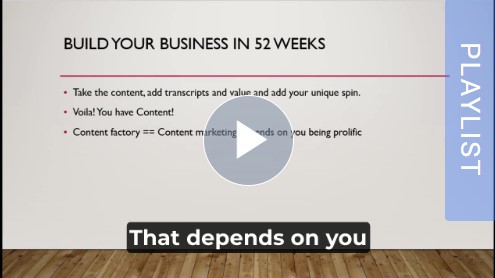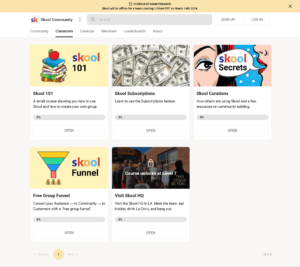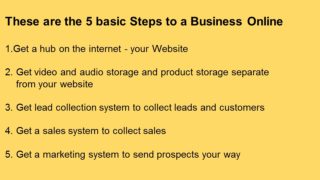The Digital Product vs. Affiliate Business Method
Which Business Model will fit into your Lifestyle?
When starting an online business, many newbies can’t decide on the business model which will fit their lifestyle while making them revenue. When starting a business, the decision often boils down to two options – promoting other’s products or selling their own products.
There are definite pros and cons to each one, and some of that is based on your own personal skills and preferences. But other aspects of your decision will be based on things like profit potential, ease of implementation, and even the speed with which you can earn.
There are some new things that have changed in the marketplace in recent years making it easier than ever for people to choose either of these methods for their business – or, combine them into one lucrative option!
Below, we’re going to go over some things that might sway your mind to select one over another, and help you start off on a path that will not only be profitable, but personally fulfilling as well.
How Fast You Can Get Your Money
There’s a big difference between how fast you can earn money and how fast that money is deposited in your bank account. We’re starting off with this point, because for many (if not most) people, the desperation they feel in needing to get paid is palpable.
In order to calculate the speed with which you can earn, several factors come into play. For example, as a digital vendor of products like eBooks or video courses, you have to factor in the product creation time and whatever amount of time you want to spend recruiting affiliates.
This is going to vary for everyone because it takes some people months to create products and others a few hours. It’s feasible for some people to come up with a product idea, create it in a day, tell affiliates about it and start having money in their PayPal or Stipe account within 24 hours.
But that’s not usual for everyone. Most people take at least a few weeks. Once it’s live, though, you will only have to check to see how fast your payment processor is in depositing the funds to your bank.
Affiliates’ payments also vary by many factors. Each platform may have their own unique payment system. For example, ClickBank is going to pay affiliates on Fridays, two days after the end of the pay period and if you’re going direct deposit, you can get paid weekly.
But on Amazon, you’re not getting paid until 60 days after you earn, and the payments are once a month. On Warrior Plus, you will have your affiliate earnings going into a site wallet, and the speed with which you can get those funds varies, too – from a few days to an entire month.
How Much Money You Can Earn
Now let’s dig into how much you can earn through each of the two business models. This is going to have variations as well. For example, as an affiliate, you have a myriad of options available that will impact the amount you earn.
You might promote digital products, which have a low-price front end but an entire funnel of upsells and downsells that contribute to higher profits (not to mention some affiliate contests you can earn from, too).
You might be promoting recurring income items that build your profits like a snowball, or you may choose one-time commission items instead. Even if you promote tangible products, there will be high ticket items that are harder to convert but pay more – and low ticket items that convert easily, but pay less.
As a digital vendor, your earnings are going to be impacted by several factors. The first is the speed with which you release new products. Then there’s the matter of how many upgrades you have to add more profits to your bottom line.
You also need to take into consideration whether or not you are going to spend time split testing your sales letter for improved conversions and recruit the top affiliates for your launches.
There’s also the matter of control. You can earn as a digital vendor because you’re in control of your process. But as an affiliate, you’re at the mercy of the product creators and platforms, hoping you get approval to promote.
There are some affiliates and vendors who only earn three figures each month because they’re slow or they just aren’t very good at what they do. Then there are seven and eight figure earners online, with many five and six figure earners as well.
Basically, there’s no crystal ball that will tell you how much you can earn because everyone is unique and their process will vary from others’ processes, even if they try to copy someone else verbatim.
What It Requires to Get Started
The requirements include a mix of skill, tools and money. For some, it doesn’t require any money upfront. For others, it may require minimal investment – but nothing big or insurmountable for either business model.
Let’s look at the cost of getting started first. If your plan is to launch products as a digital vendor, you pretty much need a domain and hosting. It is possible to set up a store on Etsy or elsewhere, but most people want control over their business, and if you’ll be creating sales pages, JV (joint venture) pages for affiliates and download pages, you’ll need to get a domain of your own.
Look up GoDaddy coupon code and find a $0.99 dot com domain and then pay for a small hosting plan that should not cost more than $5-10 per month. From there, you can use WordPress themes for free.
But if you want to, you can invest in a page building tool that will help you create professional pages made from templates. The platforms (like Warrior Plus) won’t cost anything up front to sell on – but they’ll take a small fee from each sale as their cut.
If you’re operating as an affiliate marketer, you definitely want to have your own site eventually, but it’s not a requirement up front. You can get started, though using social media platforms instead.
You can promote products on YouTube, Facebook and other places that allow your links without having to buy a domain and hosting until you feel you can afford it. The only other investment you may want to make from time to time is of a product you’re reviewing, but that’s not a necessity.
Now let’s look at the tools you may need to learn. In addition to WordPress or page builders, you’ll likely want a good keyword tool. This can be a free or paid tool, but it can tell you what the needs of your customers are and help you craft products and reviews.
Graphics creators are another type of tool that will come in handy. But luckily, you can pair a free stock photo site with a tool like Canva (the free version) and use the built-in templates to create what you need.
Last, let’s consider the skills you need to succeed with these business models. As a digital product creator, you have to know how to write well or how to record your course, depending on your preferences and those of your customers.
You’ll also need to know how to create listings on platforms like Warrior Plus, JVZoo, ClickBank or an individual platform like Thrivecart, depending on how you want to set it up.
There’s also the matter of customer service. As a digital product vendor, you’re going to need to deal with people directly. But as an affiliate, you’ll simply be the bridge between the vendor and customer, so the vendor will handle any customer service issues that arise.
As an affiliate, you’re also going to need to know how to write or record your product reviews. Plus, you want your reviews to get found easily, so you have to learn more about search engine optimization than if you were a digital vendor getting traffic through a launch.
For both business models, you’ll need to have good research skills. The good news is, there are tools that can help you with content creation, SEO and even customer service.
Artificial intelligence (AI) tools can spiff up your content, it can conduct research on your behalf, engage in social listening and predictive analysis to help you create something your audience craves and more.
How You’ll Get Customers
This is one aspect that’s very different between the two business models – the way in which you’ll get customers. As a digital product vendor, if you have a launch coming up, you’ll want to recruit affiliates to promote for you.
If you were to optimize your own site and promote it, you could also get customers that way, but it’s far more time-intensive than recruiting the right affiliates. They will send a recommendation of your product to their list of subscribers on your behalf.
So in order to make sure you achieve this goal, you have to first ensure the quality of your product and that it’s something that will be in demand. Then price it so that it gives value to the buyers, with an upsell funnel that caters to the commission needs of your affiliates.
The more you can do to entice affiliates onboard, the better. That means creating an informative JV page with readymade swipe files they can use, hosting a cash prize contest, and giving them advance notice so they can create a bonus (or give them a bonus to use instead).
Traffic as an affiliate is a bit different. You’re going to need to optimize your content - whether it’s on social media or Google and other search engines. That means learning the algorithms and hashtags, which thumbnails will grab the attention of users and more.
Knowledge You’ll Need to Have
This brings us to the knowledge you need. In addition to what’s already been covered about research, tools and SEO, you will have other knowledge needs. For example, if you are a digital vendor, you are going to be immersed in a continual learning cycle.
You must constantly pay attention to trends and research within your niche so that you can teach what your audience needs to know. But in addition to niche-based learning, you also have to stay on top of the marketing aspect have your business.
There will always be new evolutions in marketing strategies, so you're going to have to learn how to sell in a way that allows you to be competitive. There also will be new ways of developing products.
For example, webinars and video products were not always an option in the early days, where people had to teach from text only. Anytime a new strategy emerges that consumers embrace fully, you want to be aware of it so you can use it in your business.
As an affiliate marketer, you're going to have to stay on top of different trends and marketing methods that are used on social media and elsewhere. But you also have to pay attention to different products that are being released within your niche.
It's not just an affiliate’s job to present the product and tell people about the features and pricing. You have to know enough about the niche itself, such as the problems and pain points you are audiences having as well as the new technology or strategies that are being released so that you can select the right products to review.
Time Benefits and Obstacles
Lastly, you want to compare the time benefits and drawbacks of both business models. Many people avoid being a digital vendor because it's more demanding than affiliate marketing.
If you decide to have an info product launch, you are going to be setting a date for the release of that product that your affiliates are going to expect you to abide by. That means you will need to put yourself on a schedule with boundaries in place to ensure your launch goes live at that date and time.
It can be a bit more pressure filled than working as an affiliate, where you are on your own timetable discussing products that are already released, unless you are getting ready for a vendor’s product launch and trying to create a bonus or review for it.
As a digital vendor, you're also going to be restricted by time when it comes to providing support to your customers. If you have an inbox filled with customer service requests, you need to make sure you are replying to them in a timely manner rather than letting them go unaddressed.
With affiliate marketing, there's more pressure to scale your business so that you can continue bringing in profits, so you must be consistent with your reviews. As a digital product creator, depending on how well your post launch sales go, you may be able to take your foot off the gas a bit and slow down in the development of your next launch.
With both options, you'll be able to scale your business into something bigger, but it's going to require you to invest more time and effort so that you can continue serving your audience well and even expand your audience base.
There are definite benefits and drawbacks to both business models, but that’s true of every option you have available to you. The key is to find what you enjoy and pursue it vigorously so that you build a thriving online empire – even if that means combining them into one!














 lt is that new people hear about how amazing you or your company are from a trusted friend, not an advertisement. This subset of social proof is a highly powerful way to make sales. You can use word-of-mouth marketing to grow your customer base, make sales, and boost your business’s brand.
lt is that new people hear about how amazing you or your company are from a trusted friend, not an advertisement. This subset of social proof is a highly powerful way to make sales. You can use word-of-mouth marketing to grow your customer base, make sales, and boost your business’s brand. The idea behind accelerated WOMM is to create a buzz that gets people talking. Businesses create products and content with shareability in mind. They leverage influencers and brand advocates to help spread the word and may even offer incentives to their audience members for telling others.
The idea behind accelerated WOMM is to create a buzz that gets people talking. Businesses create products and content with shareability in mind. They leverage influencers and brand advocates to help spread the word and may even offer incentives to their audience members for telling others.